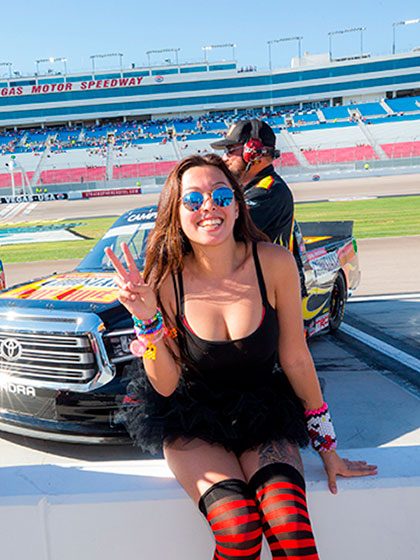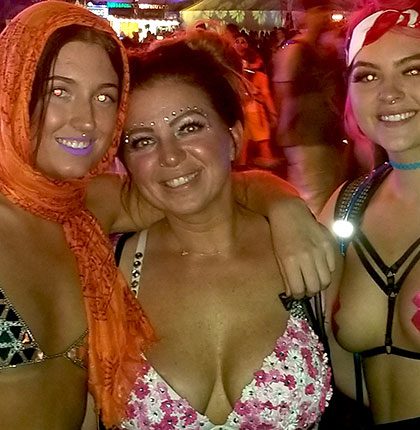The Secret History of Totems
Totems—those decorated placards raised on sticks—have become a staple of electronic music festivals. Though once upon a time they were mainly used to help friends locate each other at crowded events, nowadays attendees put great time and energy into their construction. Boasting lightweight materials, glow-in-the-dark paints, and funny messages like “Chilluminati,” they’ve become an expressive art form unto themselves. But where did totems come from? And how did they evolve into what they are today?
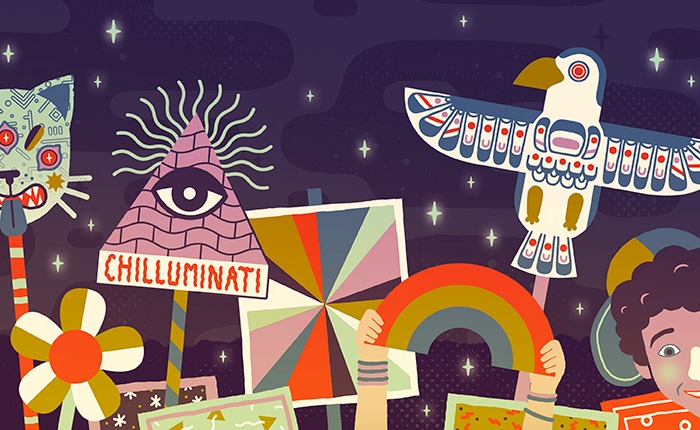
Here, we expose the secret history of totems.
Native American Totem Poles (1750)
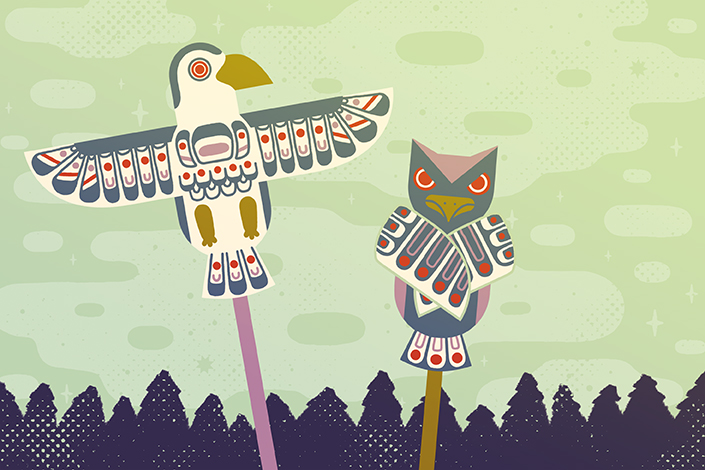
In the Pacific Northwest, long before the white man arrived with smallpox and overpriced cappuccinos, Native American tribes used totem poles to tell stories and commemorate legends. The poles also served as an early format for reviews of local Shamanic drumming circles. After observing performances, critics would scurry back to the basements of their parents’ tepees and construct their opinions out of cedar trees. An eagle with its wings extended was code for a “proud, spiritual performance,” while a frowning owl with its wings crossed was code for “your drumming is derivative and makes me want to hurl.”
Leeds Music Festival (1858)

Before the invention of the VIP section, important people had to observe live music among the unimportant masses. But that all changed at the Leeds Music Festival of 1858, which featured a symphony performing before 8,000 classical fans. They included Queen Victoria, whose henchmen lifted her up on a specially designed mini-throne so she could see better. The throne was decorated with freshly cut flowers and is nowadays thought of as a spiritual ancestor of the totem. Unfortunately, it was made of solid gold, causing the henchmen to collapse in a pool of mud, blood, herniated discs and royal undergarments.
Woodstock (1969)

Attendees of the iconic 1969 Woodstock music festival in upstate New York had no need for totems since, naked and shower-less, each possessed a distinct musk that allowed friends to find them from miles away. But on the festival’s third evening, shortly before Crosby, Stills, Nash & Young were scheduled to play, a dazed Neil Young became disoriented among the massive crowd and couldn’t find his bandmates. The situation was remedied when Graham Nash yanked a piece of plywood from the foundation of the stage and attached to it a hand-drawn sign reading, “Neil, Get Your Hippie Ass up Here.” Sadly, the stage later collapsed during Sha Na Na’s performance, but by this point everyone in the audience was asleep anyway.
Love Parade (1989)

For nearly 30 years, a giant concrete wall divided Berlin in two, separating the Soviet-occupied East Berlin from the democratic Western side. That all changed in 1989, following a gathering in West Berlin dubbed the Love Parade, when 150 people gathered to celebrate “peace, joy and pancakes”—the latter being a metaphor for the fair distribution of food in the county. Folks played industrial, synthpop and EBM (electronic body music) on their ghetto blasters and held aloft totems with clip-art pictures of their favorite Western products: Levi’s jeans, Apple IIe computers, Rainbow Brite and Hot Pockets. For many East Berliners, this was their first exposure to the consumerist way of life, and they wanted in. Masses of inspired youth grabbed the nearest pickaxes and sledgehammers, promptly broke the wall down, and scurried across. Unfortunately, realizing that the only denim still in stock were acid-washed jeans, they quickly turned around and returned home.
Daft Punk at Coachella (2006)
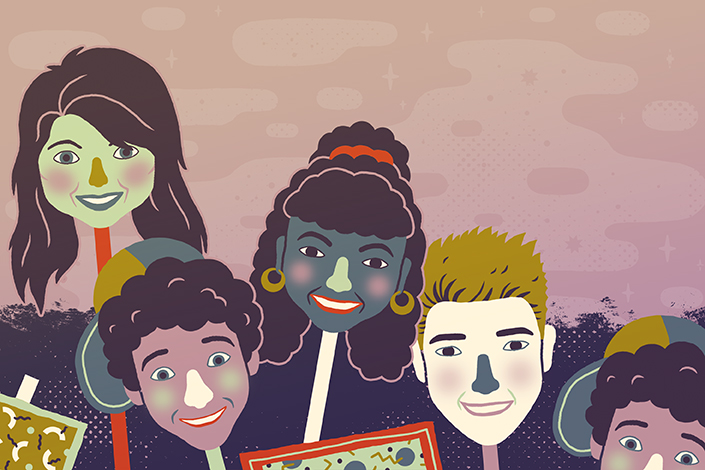
After electronic music’s first surge of American popularity in the ‘90s, the genre largely went underground. That is, until Daft Punk played Coachella in 2006, an event many credit as kicking off the modern EDM resurgence. The event also launched the modern resurgence of Saved By the Bell nostalgia, with giant heads of Zack Morris, Kelly Kapowski and Lisa Turtle as far as the eye could see. Oh, and Screech. Screech was fucking everywhere.
Burning Man (2012)
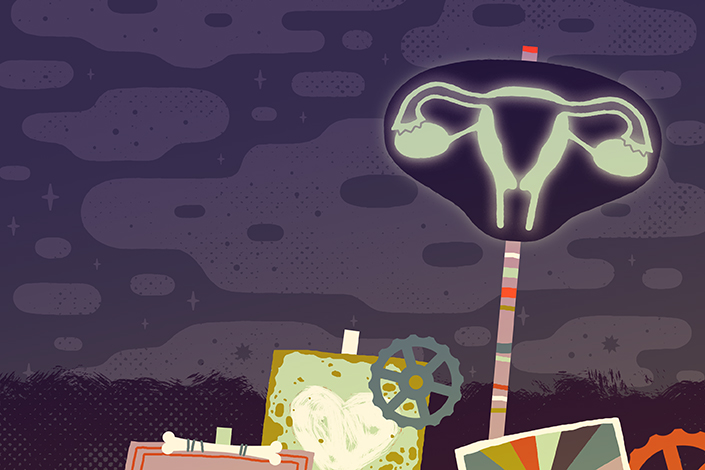
Burning Man attendees take special pride in their giant totems, constructing them with everything from found objects from junkyards to animal bones to reinforced steel. Such totems were especially important in 2012, when blinding dust storms overtook the Playa like nothing anyone had ever seen. Late one night, a man from East Lansing, Michigan, named Turnt McCoy suddenly found himself separated from his camp and his fiancé, Locust LeRoy. He wandered in the dark for hours, desperate and hungry, before finally collapsing on the ground and expecting death. But then, faintly, off in the distance, he saw a blinking green light, and he knew he would be okay. It was LeRoy’s totem, a pulsing, 200-times-life-size replica of her uterus, beaconing him back to their base. He staggered home, and the pair got married at the festival the next day. Exactly nine months later, they saw the birth of their son, Fallopian McCoy-LeRoy.
Beyond Wonderland, San Bernardino (2015)
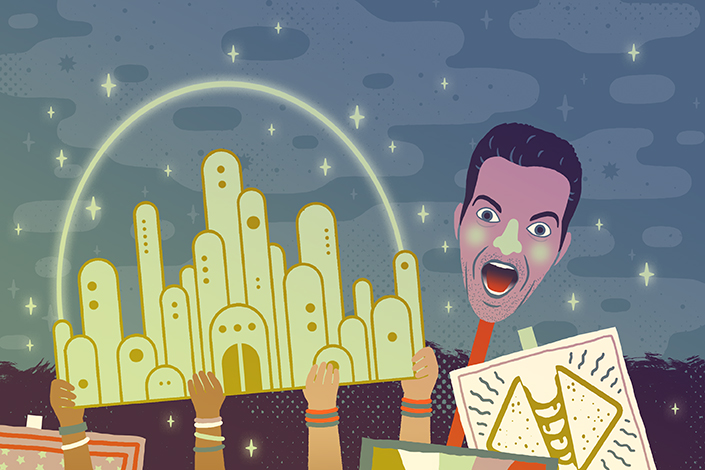
This year’s Beyond Wonderland in San Bernardino featured the most sophisticated and creative totems in history. Some were so light they practically floated away, while others were so bright they could be seen for miles. Some were so ironic that nobody could understand their references. But the festivities were threatened early Saturday evening when, in the midst of Knife Fight’s set, the Grilled Cheese Truck completely sold out their inventory. Attendees felt devastating pangs of hunger and headed toward the exits, but they were quickly diverted by a giant totem that appeared out of nowhere: a psychedelic-colored, miniature version of the Wizard of Oz’s castle, hoisted by a small group of sherpas and spraying cooling mist in every direction. Without warning, the castle doors suddenly swung open, revealing a shirtless Dillon Francis, sweating profusely over a mini stove. He was preparing artisanal grilled cheese sandwiches, made with cheese from grass-fed cows and the finest white bread available in Southern California. Thousands upon thousands of hungry attendees lined up for free sandwiches, and somehow Francis never ran out of food. Some called it a miracle. Others thought it must have been a weird publicity stunt or something.


